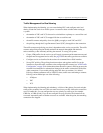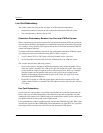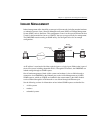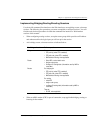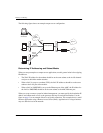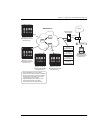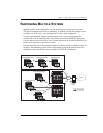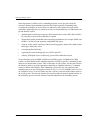
Chapter 3: Applications and Configuration Overview
Avidia System Configuration and Management User Manual 39
Static Routing. You can configure a session with a statically entered route. Through this
function, the connection provides broadcast filtering and prevents eavesdropping by specifying
destination gateways. With static IP routing, you can access only specific remote IP subnets
or hosts.
When setting parameters for an external router, configure a Static Route entry in any of the
external routers that may have been specified as a Default Router or as a Gateway. This
implementation prevents other parties from discovering routes through eavesdropping. The
format of this entry varies among the various router vendors, but is typically in the form where:
• destination is the remote target IP Subnet or host address, with the applicable subnet mask
added
• gateway is the IP address of a device(s) that connects networks
• hop is the number of routers that separate the source and its destination
Global Routing Settings. You can enable a system-wide time-to-live setting for IP
datagrams that are generated within the Avidia system and do not already have a time-to-live
value in the header. The setting specifies a maximum number of hops a packet can take before
it reaches the destination. You can also enable an IP forwarding field for the system.
Encapsulation for Bridging, Routing, or Brouting
The two encapsulation types available for bridging, routing, or brouting sessions in the Avidia
system are LLC/SNAP and VC-MUX. Most users select LLC, which allows multiple protocols
to run over the session ATM PVC. An encapsulation header identifies the types of protocol
being carried in the transmission. The LLC/SNAP encapsulation types supported and identified
by the header are:
• LLC/SNAP 802.3 which is used for traffic that comes from a bridging function
• LLC/SNAP IP which is used for traffic that comes from a routing function
VC-MUX allows only one protocol to run over the session ATM PVC. The type of protocol
must be negotiated prior to the transmission. VC-MUX encapsulation types supported are:
• VC-MUX_Bridged for bridging sessions (connections between an SDSL frame session and
an AMC must use VC-MUX_Bridged)
• VC-MUX_Routed for routing sessions
VC-MUX_Bridged has a header, while VC-MUX_Routed has a null header.



